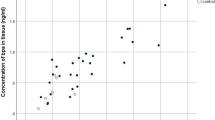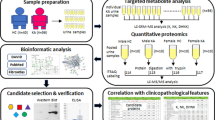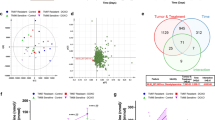Abstract
A study instigated by the British Breast Group and involving 3 centres (Edinburgh, Glasgow and Liverpool) was carried out to compare 3 methods for the estimation of urinary hydroxyproline. No significant difference between the first and the second 24 h urine collection was found for each measure of urinary hydroxyproline, within laboratories and within patient groups. Reliable hydroxyproline studies can, therefore, be performed on one 24 h urine collection. The Grant and Ellis/Goldberg methods gave comparable results and the excretion of hydroxyproline in the urine measured by either of these 2 methods could be used to distinguish cases of breast cancer with osseous involvement (as demonstrated by X-rays) from those without. The Hypronosticon Kit method was found to be unreliable as it has 29.4% false negatives in breast-cancer patients with X-ray demonstrable metastases. The incidence of elevated urinary hydroxyproline excretion in breast-cancer patients with negative X-rays was 11/14 (25%), 5/34 (15%) and 8/43 (19%) for the Ellis/Goldberg, Hypronosticon and Grant methods respectively. No conclusion can be drawn regarding the outcome of this group of patients because of the short period of follow-up.
This is a preview of subscription content, access via your institution
Access options
Subscribe to this journal
Receive 24 print issues and online access
$259.00 per year
only $10.79 per issue
Buy this article
- Purchase on SpringerLink
- Instant access to full article PDF
Prices may be subject to local taxes which are calculated during checkout
Similar content being viewed by others
Rights and permissions
About this article
Cite this article
Cuschieri, A., Jarvie, R., Taylor, W. et al. Three-centre study on urinary hydroxyproline excretion in cancer of the breast. Br J Cancer 37, 1002–1005 (1978). https://doi.org/10.1038/bjc.1978.145
Issue date:
DOI: https://doi.org/10.1038/bjc.1978.145



